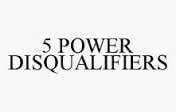I recently attended a conference in New Delhi where delegates from nearly 50 countries from Africa, Middle East and SAARC nations participated to discuss the future of medical value travel industry in India. At the end of the 3 day conference, we gathered contacts of more than 350 delegates. Obvious question now was how to work on these leads and make them spin revenue for us? Should we chase all 350 persistently or can we adapt a smarter framework to filter them and then go hammer-and-tongs on the potential ones?
Most salespeople dive right into persuasion and salesmanship with their universe. And that is a mistake! An 80/ 20 sales and marketing connoisseur knows that even after you have stimulated interest and positioned yourself properly, there’s still another step you need to make before you try to convince anybody of anything. That step is: You must DISQUALIFY people who don’t fit.
So when we started out calling these leads, we knew that 80 percent of those leads are cold to lukewarm and a complete waste of energy and fewer than five percent were actually worth following up and less than half of those would actually buy. So we hatched a plan to call each potential lead and ask right questions and save ourselves enormous amounts of time by disqualifying those that do not make the cut. It’s called The Five Power Disqualifiers ®, a process exemplified John Paul Mendocha, a former gambler and now a marketing and sales expert.
John reduced the sales process to the following 5 essential requirements that are always present when a sale is made.
Do they have Money?
The outcome of a Sale Pitch eventually boils down to whether the client has willingness to pay; has sufficient budget to spend; and is convinced on getting value for the buck they spend.
We must understand if there is congruence between what client thinks is worth to get the desired results (the return), and what we think is necessary to produce those results (the investment).
Some clients have no money while some markets itself are defined as a herd of moneyless people. We must figure out early in sale cycle whether the client has money and more importantly, a willingness to spend that money on our offering. A wise salesperson would smell a resistance to spend and alarm herself to slow down and address client’s concerns first. This process of slowing down and self-alarm is called addressing the ‘Yellow Lights’, explained in FranklinCovey’s Helping Clients Succeed methodology.
Do they have a ‘Bleeding Neck’?
 A Bleeding Neck is a dire sense of urgency, an immediate problem that demands to be solved. Right now! If you want to make the big bucks, your offering has to deal with something that involves one or both of the following:
A Bleeding Neck is a dire sense of urgency, an immediate problem that demands to be solved. Right now! If you want to make the big bucks, your offering has to deal with something that involves one or both of the following:
- Assuage pain and great inconvenience, loss of money, threat of loss, and/ or
- Provide some emotional gratification that borders on the irrational. Big pain, big pleasure.
Stuff that hits really close to the jugular or pocketbook. Serious money is always found in those places. Such scenarios gives marketers an opportunity to upsell products and refine their services to appeal to their high-paying client as “Gourmet” products.
If you want client to loosen their purse strings tomorrow, their problem today needs to be u-r-g-e-n-t and your product must offer value to the client. That brings us to the most critical power disqualifier amongst the five… your product’s Unique Value Proposition.
Do they buy into your Unique Selling Proposition (USP)
 If you’re just going into a market, the question is, what big benefit will the client buy into? What kind of deal would they snatch up without thinking twice? What benefit do they want that your competition is not promising? A Unique Selling Proposition (USP) is your unique answer to these questions:
If you’re just going into a market, the question is, what big benefit will the client buy into? What kind of deal would they snatch up without thinking twice? What benefit do they want that your competition is not promising? A Unique Selling Proposition (USP) is your unique answer to these questions:
- What does your product do that nobody else’s product does?
- Why should I buy from you instead of anybody else?
- What guarantee can you make that nobody else can make?
This is your unique selling proposition, and it’s hugely important. Michael E. Porter’s definition of a value proposition answers three fundamental questions: Which customers are you going to serve? Which needs are you going to meet? What relative price will provide acceptable value for customers and acceptable profitability for the company?
The first test of a strategy is whether your value proposition is different from your rivals. If you are trying to serve the same customers and meet the same needs and sell at the same relative price, then by Porter’s definition, you don’t have a strategy.
Do they have the ability to say ‘YES’
 Are you selling to a person who has to get approval from his boss? If so, then you may well be ready for procrastination and even a turn-down after having invested blood-and-sweat during sale prospecting.
Are you selling to a person who has to get approval from his boss? If so, then you may well be ready for procrastination and even a turn-down after having invested blood-and-sweat during sale prospecting.
Make sure your sales propositions are making to the right ears; ears that have authority to take decision either a yes or no. And, mind you, either of the two must be fine with a salesperson because it is wise to get out of a dead, good-for-nothing deal sooner than later.
However, in most cases, we are unlikely to find a ‘YES’ person that easily. It requires gaining access to all key stakeholders, deeply understand what is important to them and accurately elicit their criteria for making the decisions at hand.
Influencing how decisions are made would require a deep and thorough understanding of client’s decision process as outlined below:
Does what you sell ‘FIT’ into your client’s overall plan?
 Whatever you sell needs to harmonize with natural, existing forces— both on the inside and outside of your prospect’s world. Ask ‘What client’s need is my solution sufficing?’ Is it Monetary (reward/ incentive); Professional (recognition); Personal (pleasure or gratification); or Self-actualization (esteem).
Whatever you sell needs to harmonize with natural, existing forces— both on the inside and outside of your prospect’s world. Ask ‘What client’s need is my solution sufficing?’ Is it Monetary (reward/ incentive); Professional (recognition); Personal (pleasure or gratification); or Self-actualization (esteem).
Whatever it be, the selling needs to be simple and weaved with your client’s world. If our service is too complex for the prospect and does not fit in their scheme of things, the easiest thing for them to do is say no.
Sales is not a “convincing people” process, as most new salespeople are accustomed to think. Rather, disqualification is the name of the game, and the quicker you can eliminate the customers with weak interest, the faster you can sell to those who are willing to buy.
Step past the sick and the lame early in the game, and deal only with the healthy ones left standing. You will save yourself so much time.
That’s what separates boys from men in Sales.
Disclaimer: This blog is adapted from my learnings from Perry Marshall’s 80/20 Sales and Marketing and
FranklinCovey’s Helping Clients Succeed Sales improvement methodology
Before you go, let me thank you for making it this far. I hope you liked the post.
I would love to hear your comments on this post. It may just be some clicks on a type pad to you but would mean a lot to me!
And by the way, I value criticism equally as a praise!








